Meghretsots St. Astvatsatsin Church
Location
The Meghretsots St. Astvatsatsin Church is located in Shushi City's upper district, approximately 600 meters south-west of the Ghazanchetsots Cathedral (Holy Savior Cathedral).
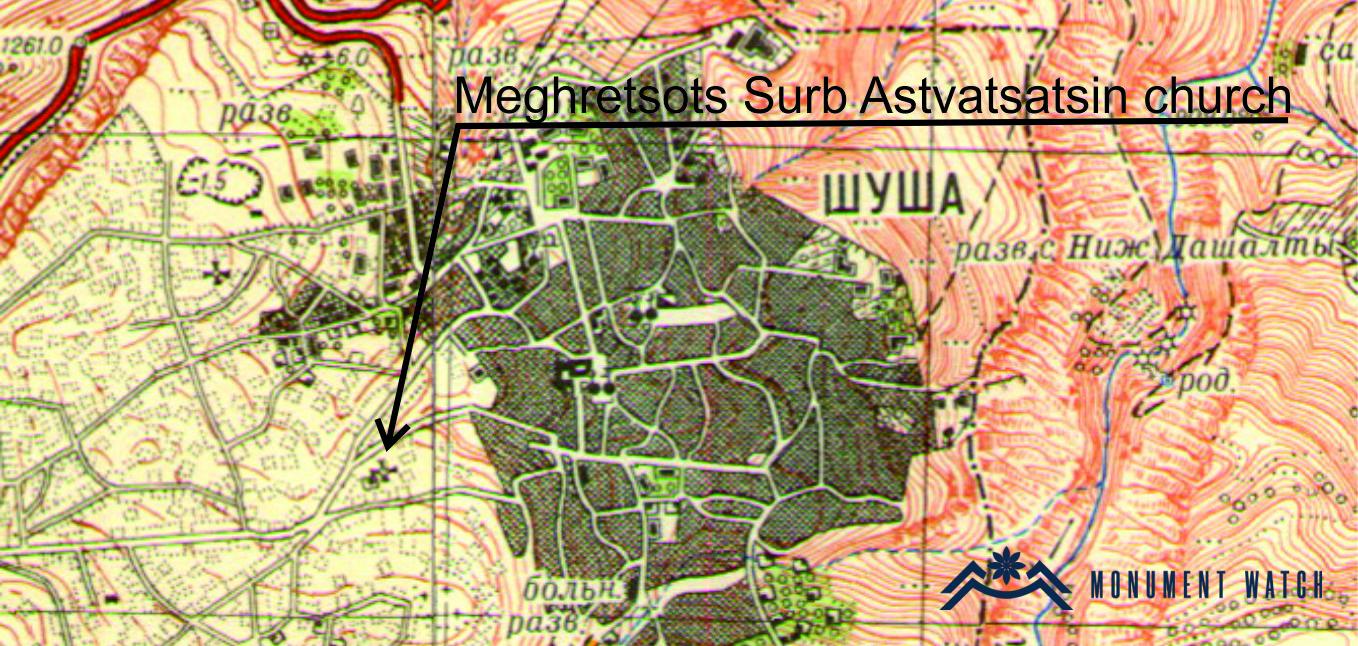
Historical overview
In 1838, immigrants from Meghri built the church in the district of the same name. According to the building inscription, it is known as St. Meghretsots Holy Savior Church, and was built with the financial help of Mahtesi Hakhumyants (Barkhutaryans 1895, 132).
The church was demolished, renovated, and functioned as an outdoor movie theater in the 1960s (Fig. 1). Witnesses claim that it was nearly impossible to destroy the church's strong and thick walls.
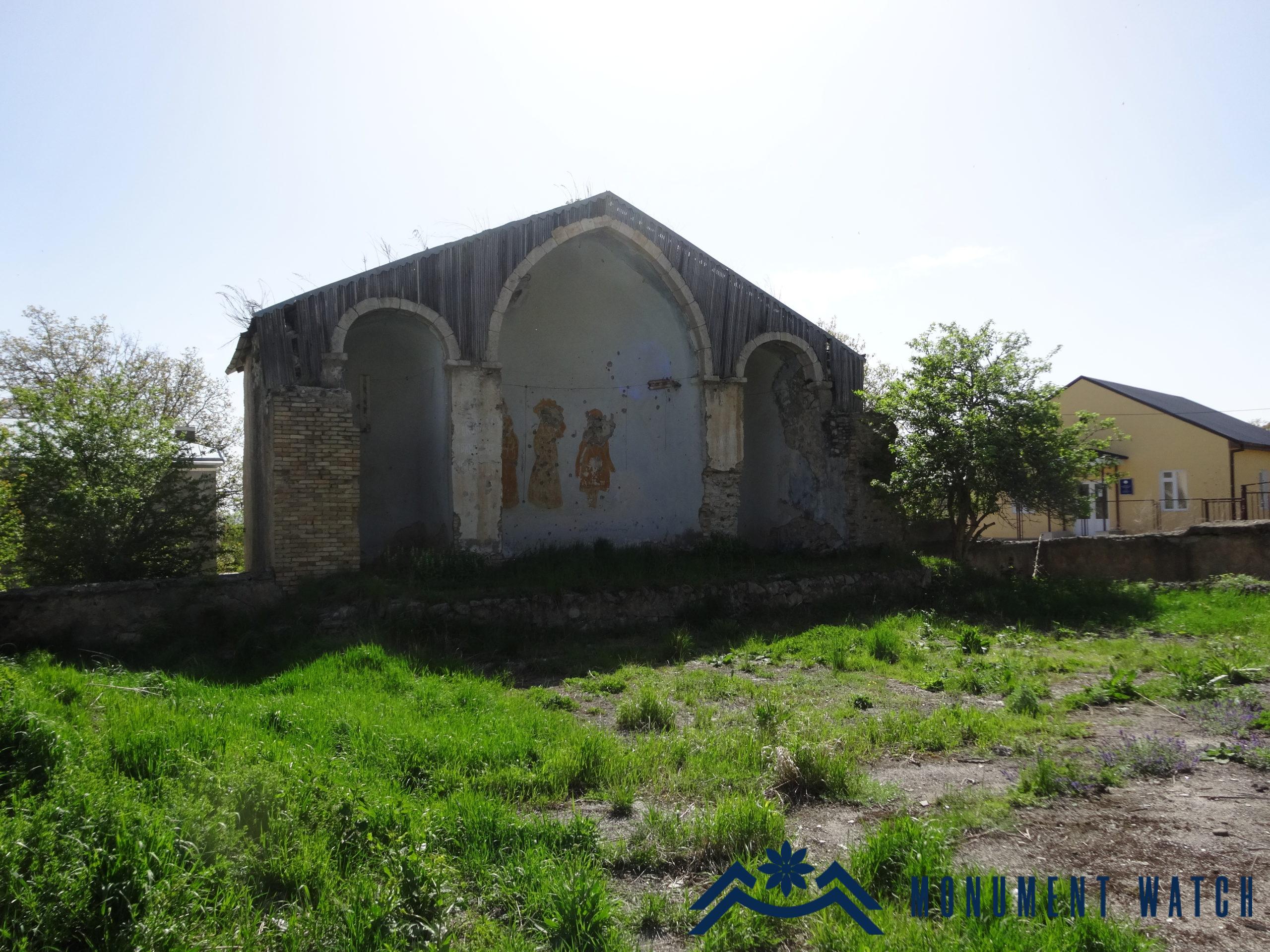
Fig. 1 The general view of the church before the excavations, photo by N. Yeranyan.
During the Soviet period, the majority of the walls were demolished by explosions as a result of the Azerbaijani authorities' extortion of Armenian cultural heritage, and the main walls were incorporated into the asphalt (Mkrtchyan 1980, 159). The excavations in the area were carried out in 2017 by the Artsakh Republic's "State Service for the protection of historical environment" SNCO. As a result of the excavations, the asphalt layer was removed, and the church's base was exposed (Figs. 2, 3). The territory was completely covered in asphalt prior to the excavations. Only the tabernacle and sacristies were visible on the site (Fig. 4).
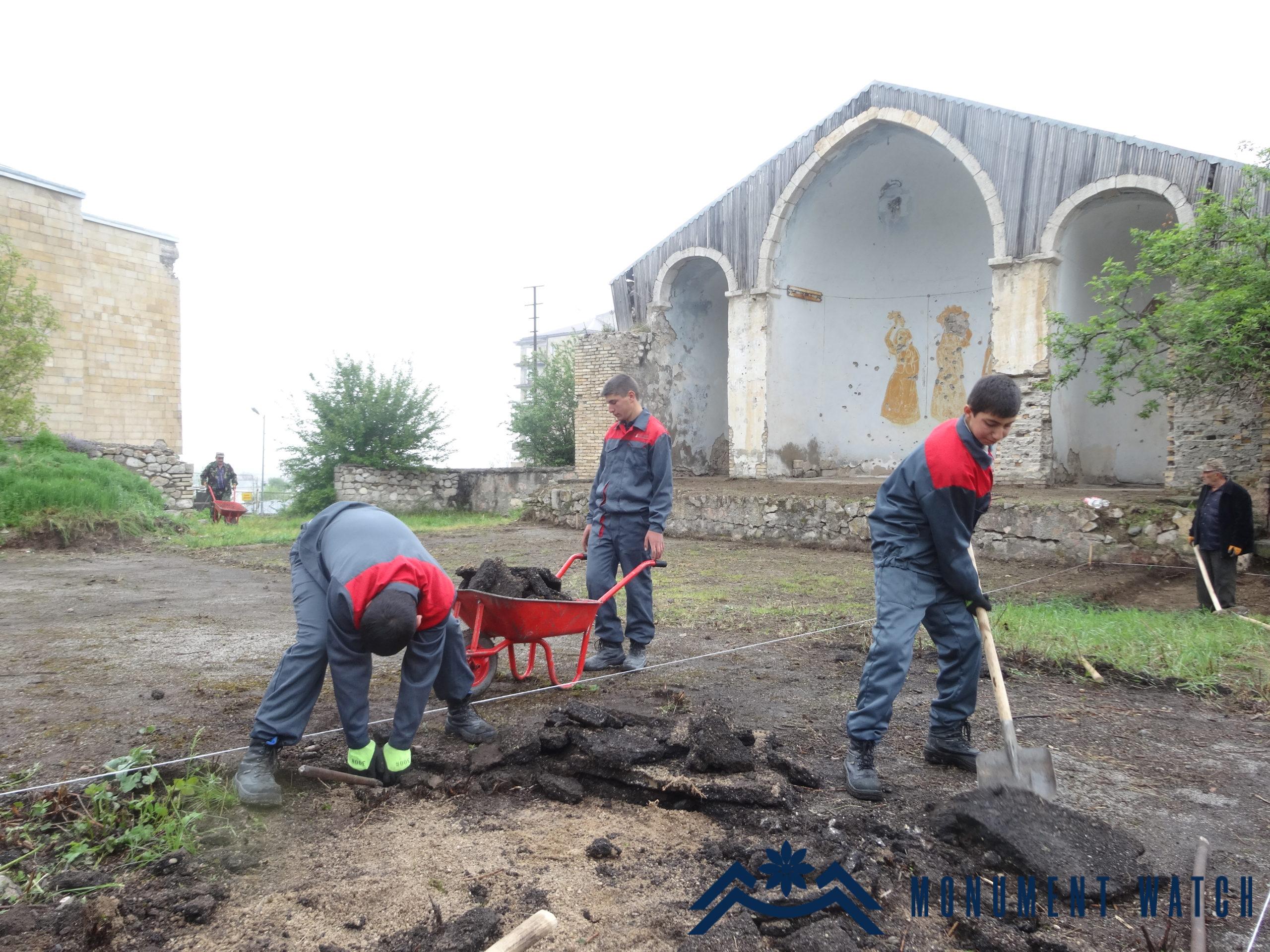
Fig. 2 The removal of the asphalt layer in the church area, photo by N. Yeranyan.
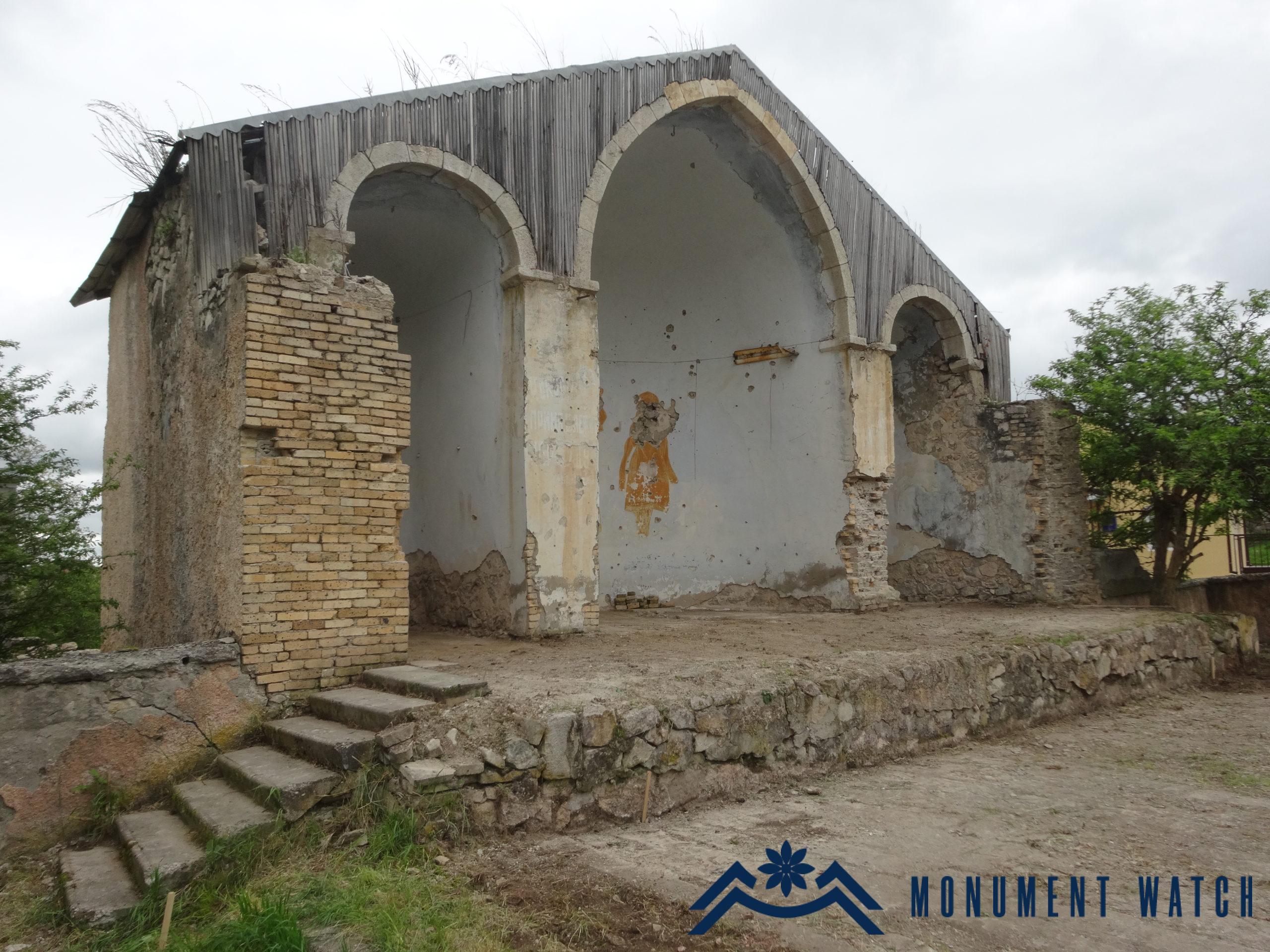
Fig. 4 The tabernacle of the church and the two sacristies, photo by N. Yeranyan.
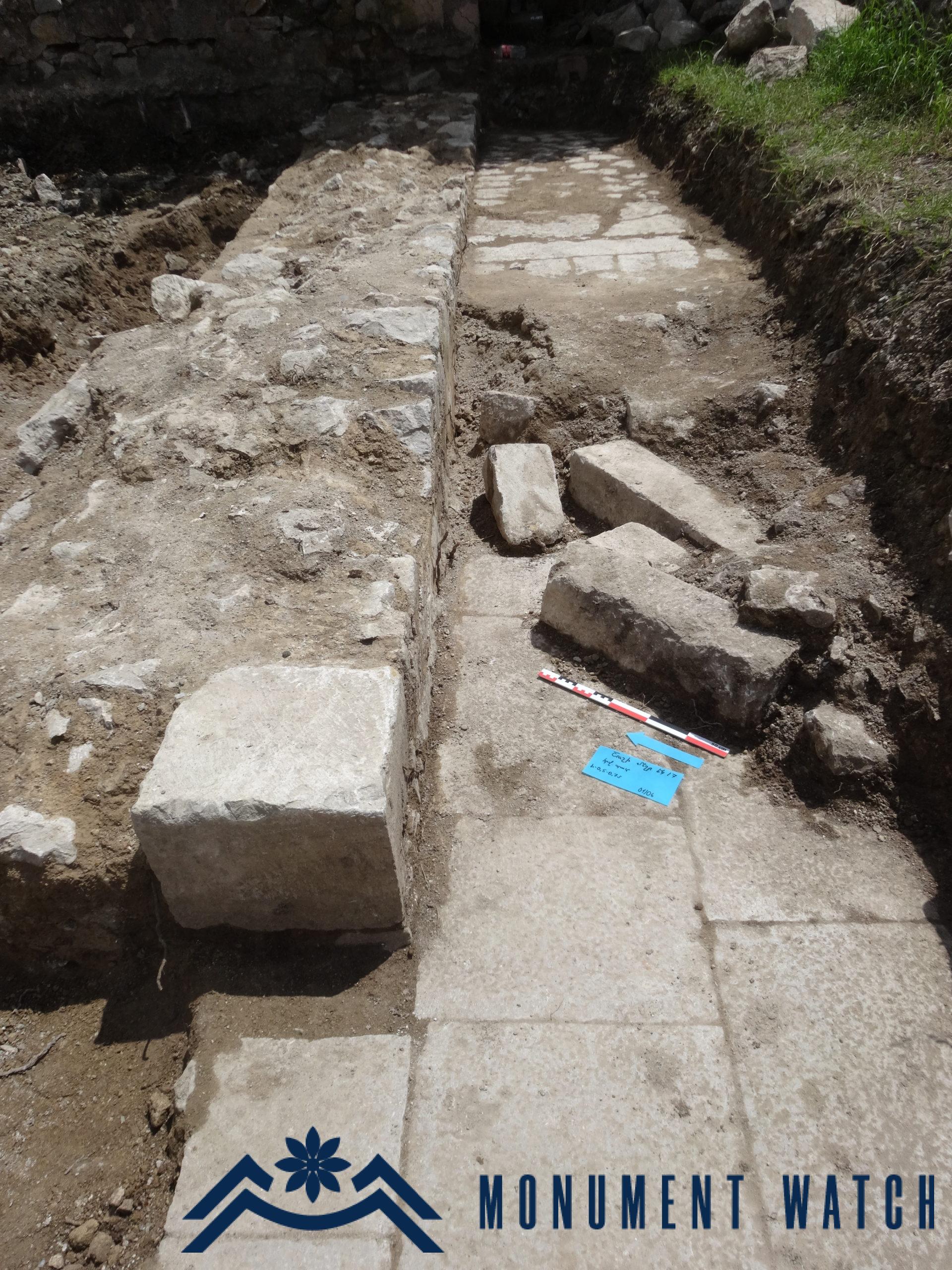
Fig. 5 The polished edges of the southern entrance and paved yard, photo by N.Yeranyan.
The condition before, during, and after the war
Prior to the war, only the eastern wall was standing, with the foundations of the other walls reaching up to 1 meter in height. There is no information available regarding the monument during or after the war.
The monument is currently under Azerbaijani occupation.
Bibliographic examination
Makar Barkhudaryants (Barkhutaryants 1895) provides detailed information about the church. Mkrtchyan's work on Artsakh's historical and architectural monuments provided us with information about the monument's condition throughout the Soviet era (Mkrtchyan 1985).
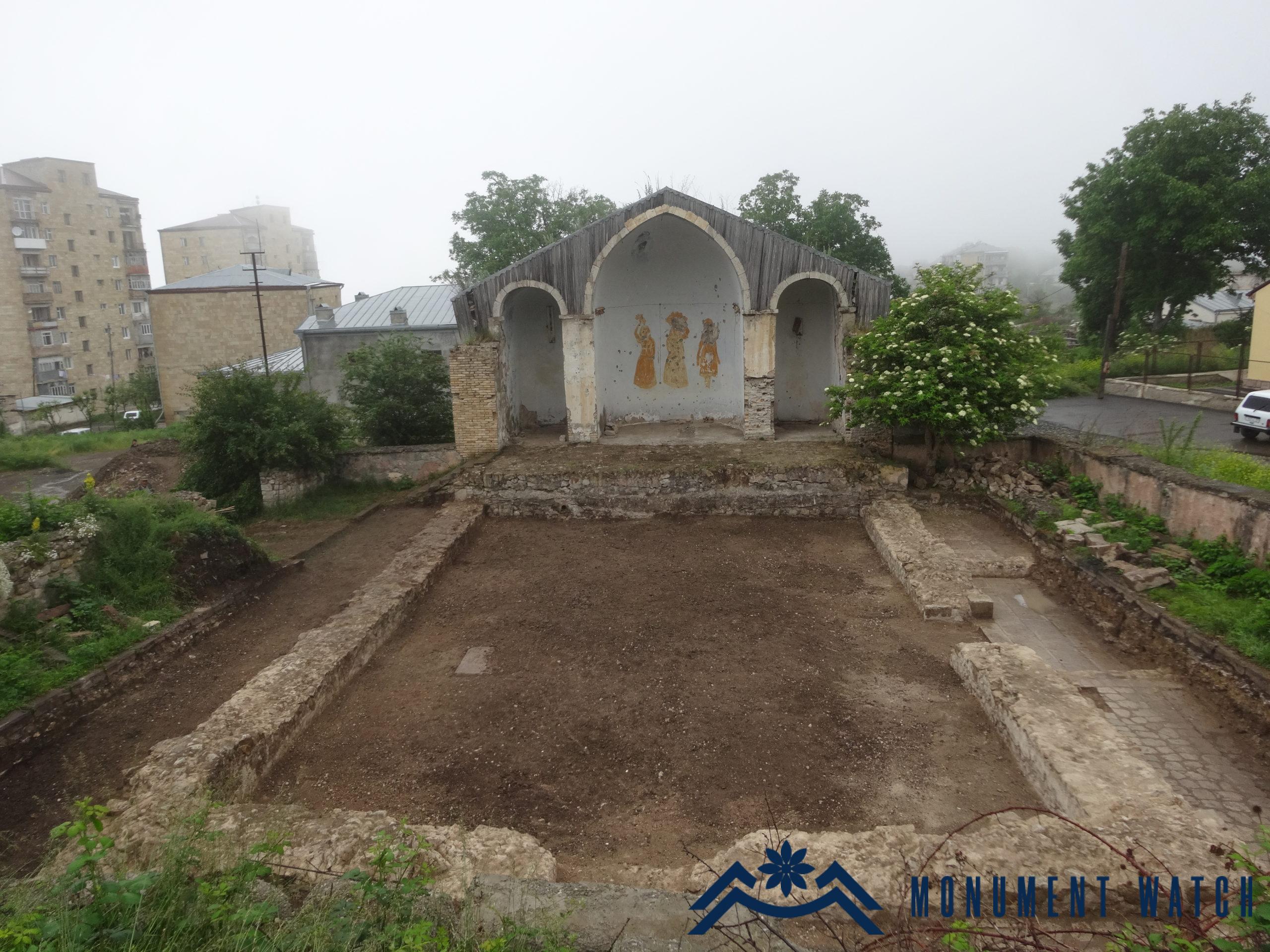
Fig. 3 The general view of the church after the excavations, photo by N. Yeranyan.
Architectural-compositional examination
According to Makar Barkhudaryants, the church was constructed on the same principles as the Aguletsots church: the chapel had a rectangular spatial composition. The vaulted arches were supported by four pillars raised in the hall's center and three pairs of columns on the hall's longitudinal walls. It had two south-west entrances and ten windows. The bell tower was a three-story building made of polished stones. A small bell tower, similar to an octagonal rotunda, was also in the middle of the church roof, as is common in Artsakh's contemporary churches.
According to Makar Barkhudaryants, the following inscription was discovered on the front stone of the south door: "In 1838, Mahtesi Hakhumeants didn't have an offspring to continue his lineage, so he built this holy church as a testament to letting the human race fly on high for the sake of the immortal name of the Blessed Virgin Mary. The earthly body is buried here, in this glorious tomb of a temple, in commemoration of the passing soul's journey in the transient world, before the fulfillment of a new destiny." (Barkhutaryants 1895, 132-133). The location of the slab, mentioned by the lintel, is currently unknown.
According to the Karabakh Ecclesiastical Court's verdict on the renovation of Meghretsots Church on May 13, 1839 (RA HSCA, p. 56, l. 1, c. 415, sht. 2-3, original manuscript), there was formerly a wooden church on the site. The document clearly states that the church was to be built only after 1839. The inscription on the facade's stone most likely contains the construction date of the church's initial wooden structure.
The church is 24.75 x 12.77 meters in size, with walls up to 1.6 meters thick. It had two entrances, one on the south and one on the west; the adjacent parts of them were paved (Fig. 5). The Meghretsots Church, with its spatial-architectural solutions, is reminiscent of the historic churches of Artsakh from the 17th to the 19th centuries (Fig. 6).
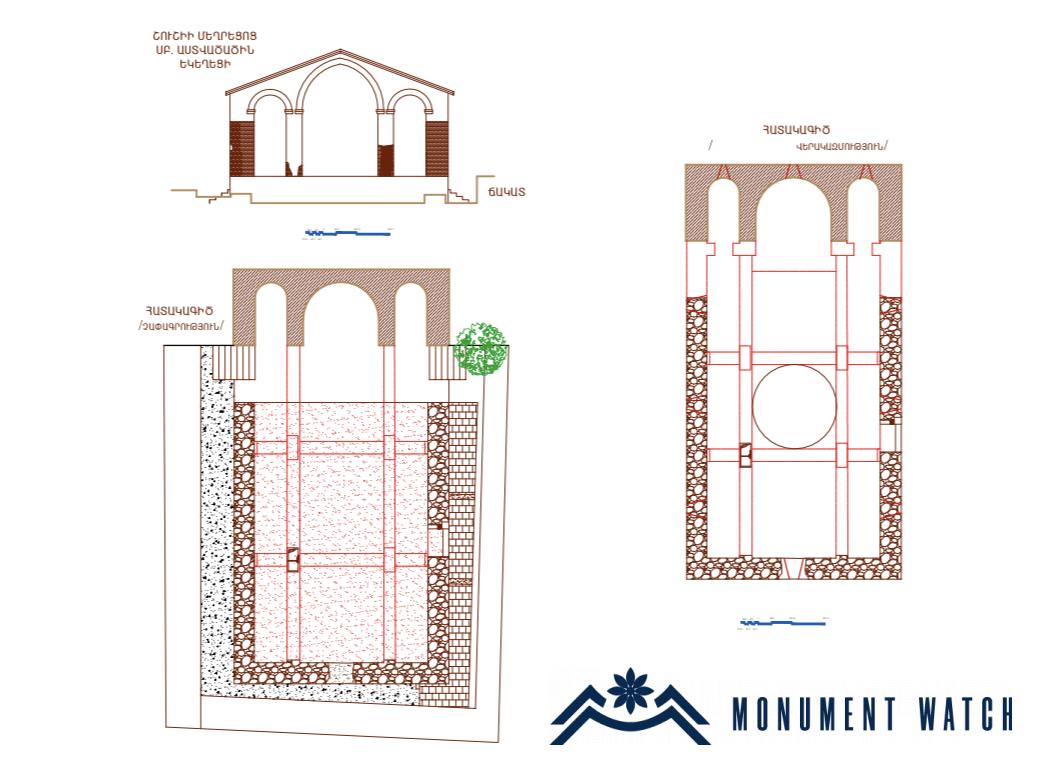
Fig. 6 The architectural plan of the church, photo by M. Titanyan.
Bibliography
- Barkhutaryants, 1895–Barkhutaryants M., Artsakh, Baku, Aror.
- Mkrtchyan, 1985-Mkrtchyan Sh., Historical and architectural monuments of Nagorno Karabakh, Yerevan, Armenia.
- Petrosyan 2010 – Petrosyan H., Cultural ethnocide in Artsakh (mechanism of extortion of cultural heritage), state terrorism of Azerbaijan and the policy of ethnic cleansing against Nagorno Karabakh, Shushi, pp. 137-148.
Meghretsots St. Astvatsatsin Church
Artsakh